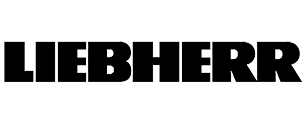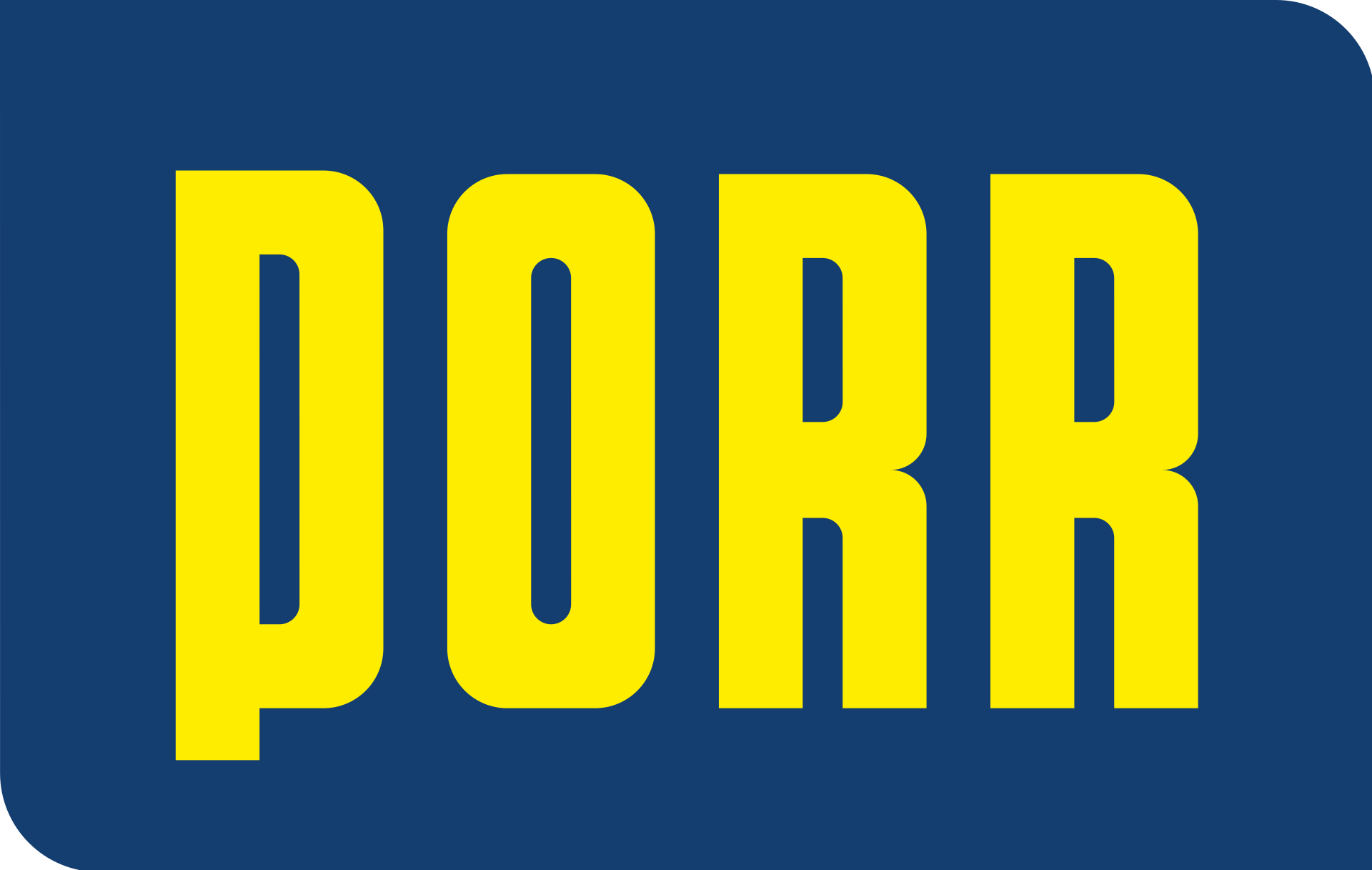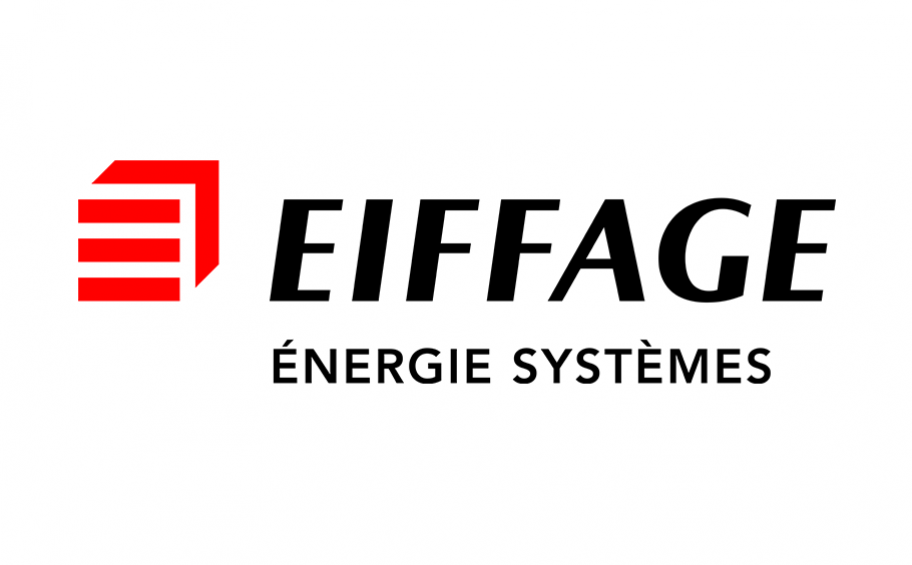
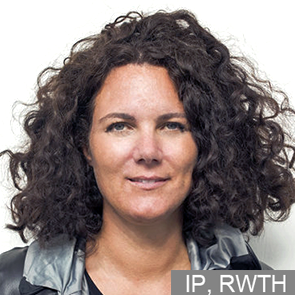
Director of the Chair for Individualized
Production (IP),
Faculty 2 of Architecture
RWTH Aachen University
Website: https://www.ip.rwth-aachen.de/
Email: brell-cokcan@ip.rwth-aachen.de
The Chair of Individualized Production (IP) focusses on the use of innovative machinery in material and building production. In order to create an environment that allows the efficient, individualized production of lot size one, new and user friendly methods for man machine interaction are developed. IP employs researchers from different fields of robotics and building production to streamline the necessary digital workflow from the initial design to the production process; shaping the construction site of the future via intuitive, easy-to-use interfaces.
In 2018 Sigrid Brell-Cokcan co-founded the cross-faculty Center for Construction Robotics (CCR) on RWTH Aachen Campus to focus on the automation in construction with key industry leaders along the construction industry value chain.
In 2020 together with an interdisciplinary RWTH team across four faculties, the new international Master Degree Construction & Robotics (CR) and the Reference Construction Site on Campus West was launched, which will serve as a living lab for our interdisciplinary student body throughout their studies.
Lectures:

Director of the Chair for Computational Design (CAAD),
Faculty 2 of Architecture
RWTH Aachen University
Website: https://dc.rwth-aachen.de/en
Email: j.beetz@caad.arch.rwth-aachen.de
The design, planning, construction and operation of user-friendly and sustainable buildings and cities require the close cooperation among many.
The efficient communication between stakeholders is a key factor for the integration of knowledge and information of different disciplines and domains. Next to traditional two-dimensional technical drawings, a wide range of digital tools are increasingly being used across the whole lifecycle of buildings. These tools are based on shared, interdisciplinary building information models (BIM) that can be used for e.g. requirements management, parametric design variations or the simulation of building physics performance, structural behavior and construction processes.
The study, understanding, application and development of these fundamental methods, technologies and tools are the central aspects of the chair Design Computation – CAAD (Computer Aided Architectural Design).
Lectures:
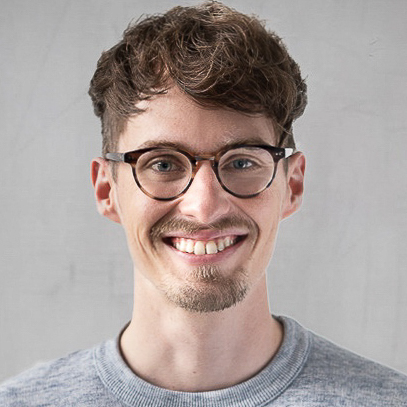

Researcher at the Chair for Individualized Production (IP),
Faculty 2 of Architecture
RWTH Aachen University
Website: https://ip.rwth-aachen.de
Email: adams@ip.rwth-aachen.de
Thomas Adams is a civil engineer with experiences in material and structural design and robotic fabrication. He is currently working in the fields of robotics in existing buildings, 3D-Concrete Printing and construction project management. Thomas Adams studied from 2011 till 2016 at the RWTH Aachen with a focus on structural engineering and concrete design where he did his master thesis about the robotic application of ultra-lightweight foamed concrete onto bare walls.
After his studies he worked for the Institute for Building Materials as a research assistant and for the construction company GOLDBECK GmbH as a development engineer. He gained experiences in material design, structural engineering and robotic fabrication. Since 2019, he supports the interdisziplinary team at the chair of individualized production under the lead of Prof. Brell-Cokcan. In his doctoral studies he investigates in robotic extrusion processes and how they can improve the design and strength of cementitious structures.
Lectures:
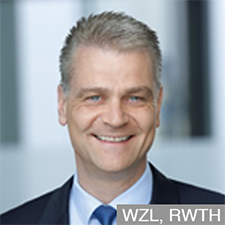
Director at the Chair of Machine Tools at the Laboratory for Machine Tools and Production Engineering (WZL),
Faculty 4 of Mechanical Engineering
RWTH Aachen University
Website: https://wzl.rwth-aachen.de
Email: c.brecher@wzl.rwth-aachen.de
The lecture mechatronics and control technology provides hardware-and software-related knowledge base in the field of mechatronics and control of facilities for production. The control system decreases with increasing automation in the industry plays a key role. Along the different levels in automation and control technologies, mechatronic systems will be taught to the sensor/actuator level, the control level to the management level. The different types of controllers and systems, and their programming methods are covered here as well as drive types and procedures to process and condition monitoring of mechatronic systems.
The course thus provides knowledge and experience in the field of construction, design and planning of mechatronic systems in production. In addition, students will be in a position to cross-border concepts of machine control, as well as the machinery and process monitoring and can apply this knowledge derived from assessments of the quality of industrial control solutions.
Lectures:
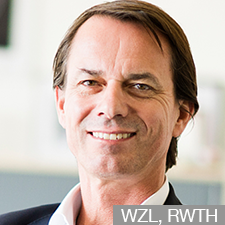
Director of the Chair of Manufacturing Technology at the Laboratory for Machine Tools and Production Engoineering (WZL)
Faculty 4 of Mechanical Engineering
RWTH Aachen University
Website: https://wzl.rwth-aachen.de
Email: t.bergs@wzl.rwth-aachen.de
The Chair of Manufacturing Technology at the Laboratory for Machine Tools and Production Engineering (WZL) of RWTH Aachen University under the direction of Professor Thomas Bergs teaches and conducts research in the fields of the fundamentals of manufacturing processes, process investigations of manufacturing processes, gear technology, process monitoring and simulation, and technology planning. Existing knowledge about the optimal use of manufacturing technologies is continuously challenged and deepened and new research approaches are developed.
The chair carries out projects with companies as well as publicly funded projects in direct cooperation or in the form of technology working groups. In this way, research results can be applied to current problems in industrial production environments. For this purpose, the chair has among others access to an extensive, ultra-modern machine park at the Cluster Production Engineering.
Lectures:
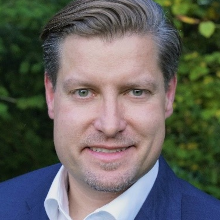

Director of Geodetic Institute and Chair for Computing in Civil Engineering & GIS (gia),
Faculty 3 Faculty of Civil Engineering
RWTH Aachen University
Website: http://www.gia.rwth-aachen.de/
Email: blankenbach@gia.rwth-aachen.de
As in many areas, digitization is also progressing rapidly in the construction industry. Its digital transformation is directly linked to Building Information Modeling (BIM) and web-based (distributed) Geographic Information Systems (GIS), which are based on two- and three-dimensional digital models of the (built) environment. Planning and operation both depend on the digital data acquisition and modeling of the as-is situation. Modern reality capturing methods utilize terrestrial and airborne (e.g. drones) geospatial sensor technology, succeeded by (partially) automated modeling processes. While satellite-based georeferencing techniques are used in uncovered environments, specialized indoor positioning methods are required for example inside buildings. Based on digital building models and precise localization techniques mobile mixed reality system can be realized. Research, development and application of these technologies and methods as well as transferring them into student education are central tasks of the gia.
Lectures:
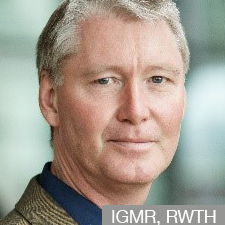
Director and Chair of the Institute of Mechanism Theory, Machine Dynamics and Robotics (IGMR),
Faculty 4 of Mechanical Engineering
RWTH Aachen University
Website: https://igmr.rwth-aachen.de/…/
Email: corves@igmr.rwth-aachen.de
Mechanism Theory and Machine Dynamics are the foundation of proper motion design for machines and technical equipment in various application areas. This holds especially true when it comes to robotic applications especially in the area of handling, logistics, assembly and automation. In general, automation can be seen in many different application areas, but in traditional construction engineering automation is quite rare, especially when it comes together with the use and deployment of robotic solutions.
The introduction of computer based tools such as the building information model (BIM) has led to new possibilities and opportunities in the planning, design and application of robotic solutions in the construction business. This includes both stationary robotic arms as well as mobile robots and also the combination of both. The lectures mentioned below will give the student the knowledge and capabilities of modelling, analyzing and optimizing robotic systems.
Lectures:
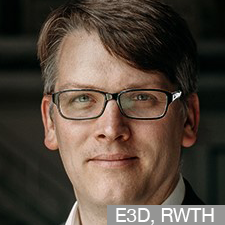
Chief Engineer of Institute of Energy Efficiency and Sustainable Building (E3D),
Faculty 3 of Civil Engineering
RWTH Aachen University
Website: https://www.e3d.rwth-aachen.de/en
Email: frisch@e3d.rwth-aachen.de
Building Performance Simulation (BPS) can be used to analyze and investigate a building’s response to specific boundary conditions or a change in locality without the necessity of constructing the building in the real world. It can be used in early design stages to evaluate the performance of different design choices or in later stages to optimize building operation. In this course, the basics of mathematical-physical models and numerical methods will be investigated in a lecture and a practical part.
The following topics are discussed in detail within the course: basic principles of planning and implementation of energy performance modeling and simulation, thermodynamic and multidimensional effects, solar modeling and ray tracing algorithms, and practical implementation of a multi zonal building thermal simulation using Modelica.
Lectures:
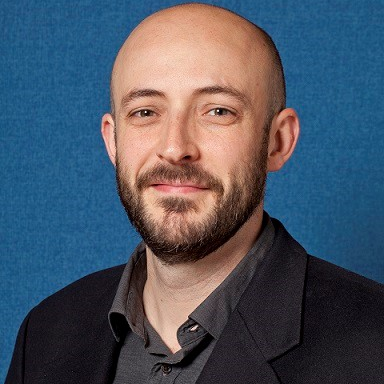

Director of Chair of Geotechnical Engineering and Institute of Geomechanics and Underground Technology (GUT),
Faculty 3 of Civil Engineering
RWTH Aachen University
Website: https://www.gut.rwth-aachen.de
Email: raul.fuentes@rwth-aachen.de
The ever-growing urban population faces challenges of ageing infrastructure. The process for renewing the infrastructure is costly, and current practices for maintaining and repairing are often ineffective and labour intensive. Road networks, for instance, which act as the arteries of cities, suffer from reoccurring potholes (in the UK, a pothole is filled every 21 s). A more effective way of maintaining road networks is through a proactive approach, where condition assessment and intervention are conducted throughout the asset life cycle. However, there are barriers to a proactive approach, including budget constraints and the lack of effective technology for early defect detection (followed by a cheap yet effective repair). This presentation puts forward a new paradigm for city infrastructure maintenance where robots work in harmony with other systems to undertake proactive infrastructure maintenance.
Lectures:
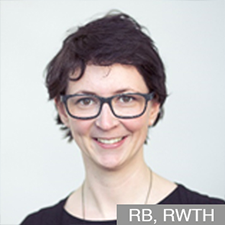
Director of the Chair for Cycle Oriented Construction (RB),
Faculty 2 of Architecture
RWTH Aachen University
Website: https://www.rb.rwth-aachen.de/…/
Email: lhildebrand@rb.arch.rwth-aachen.de
Linda Hildebrand is a junior professor for Cycle Oriented Construction at the Faculty of Architecture at RWTH Aachen. At TU Delft, she did her doctorate on the topic of life cycle assessments in the architecture planning process. Besides, she worked on methods and implementation of circular economy in construction in research and teaching. She is an architect with a focus on ecological consultancy.
Lectures:
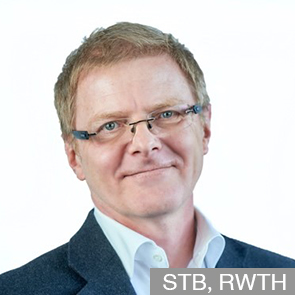
Head of Div. of Timber Structures at Institute of Steel Construction (STB),
Faculty 3 of Civil Engineering
RWTH Aachen University
Website: https://www.stb.rwth-aachen.de/en
Email: hoff@stb.rwth-aachen.de
Timber as building material has become very popular in the recent past. The continuously increasing popularity is linked to the fact that wood is a renewable material with a very good CO2 balance on one hand and to the increasing availability of engineered wood materials providing tailored mechanical properties in combination with highest precision and quality of the final products. The increasing market shares of timber structures result in the demand for qualified engineers and designers understanding and capable of utilising the particular characteristics of this material in the context of structural engineering.
The lecture Timber Structures I provides an introduction into the material properties of wood and into the design concept of timber structures. Within the lecture the principles of structural members, fasteners and joints and the related verification methods are explained. The lectures comprise also the design of roof structures, stability in compression as well as aspects of serviceability and durability.
Lectures:
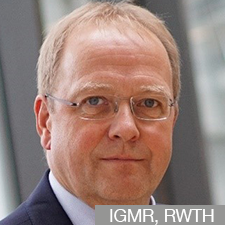
Deputy Chair for of Mechanism Theory, Machine Dynamics and Robotics (IGMR),
Faculty 4 of Mechanical Engineering
RWTH Aachen University
Website: https://www.igmr.rwth-aachen.de
Email: huesing@igmr.rwth-aachen.de
Mechanism Theory and Machine Dynamics are the foundation of proper motion design for machines and technical equipment in various application areas. This holds especially true when it comes to robotic applications especially in the area of handling, logistics, assembly and automation. In general, automation can be seen in many different application areas, but in traditional construction engineering automation is quite rare, especially when it comes together with the use and deployment of robotic solutions. But the introduction of computer based tools such as the building information model (BIM) has led to new possibilities and opportunities in the planning, design and application of robotic solutions in the construction business. This includes both stationary robotic arms as well as mobile robots and also the combination of both. The lectures mentioned below will give the student the knowledge and capabilities of modelling, analyzing and optimizing robotic systems.
Lectures:
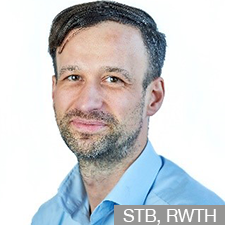
Institute of Steel Construction (STB),
Faculty 3 of Civil Engineering
RWTH Aachen University
Website: https://stb.rwth-aachen.de/en
Email: kemper@stb.rwth-aachen.de
The institute of steel construction has a long history in research and teaching. In the academic training of civil engineers, we set a high priority on giving students the fundamental knowledge base and theoretical background for the assessment of complex problems in their future fields of activity. At the same time, we strive to close the gap between academics and practice by discussing application-oriented topics and providing contact to practitioners. Within the course “Steel Structures in Industrial Applications”, basic theories of mechanics are applied and supplemented by more advanced topics such as stability or 2nd order theory.
Lectures:
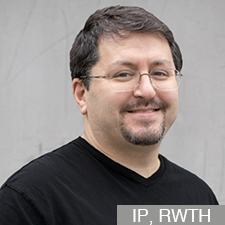
Researcher at the Chair for Individualized Production (IP),
Faculty 2 of Architecture
RWTH Aachen University
Website: https://www.ip.rwth-aachen.de/
Email: kerber@ip.rwth-aachen.de
Ethan Kerber is a computational designer working at the intersection of Architecture, Engineering and Construction. Ethan has a Master’s degree in Industrial Design from the San Francisco State University and a Master of Engineering in Computational Design and Construction from the Hochschule Ostwestfalen-Lippe. He has experience in metalwork and digital fabrication with public sculptures permanently installed in Washington DC and Arlington Virginia. Ethan is currently a researcher at The Chair of Individualized Production where he is developing a doctoral dissertation on the Optimization and Automation of Steel Structures.
The Chair of Individualized Production (IP) founded by Prof. Sigrid Brell-Cokcan in 2015 focusses on the use of innovative machinery in material and building production. In order to create an environment that allows the efficient, individualized production of lot size one, new and user friendly methods for man machine interaction are developed. IP employs researchers from different fields of robotics and building production to streamline the necessary digital workflow from the initial design to the production process; shaping the construction site of the future via intuitive, easy-to-use interfaces.
Lectures:
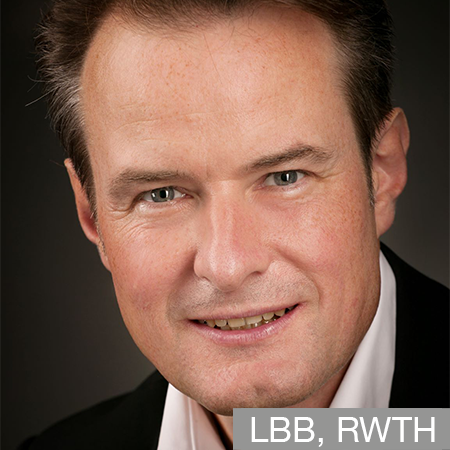
Director of Chair of Structural Analysis and Dynamics,
Faculty 3 of Civil Engineering
RWTH Aachen University
Website: https://lbb.rwth-aachen.de/
Email: klinkel@lbb.rwth-aachen.de
The Chair of Structural Analysis and Dynamics is characterized by the modeling of load-bearing structures and the development of mathematical calculation methods for structural analysis. The aim of the courses is to enable students to assess the load-bearing behavior of bar-, plate- and shell-like structures under static and dynamic load. The lectures teach methods for the analysis of internal forces, stress and deformation response. Modeling, model adaptivity, dimensionally adapted structural modeling, e.g. connecting and joining structures and the coupling of different types of structures play an important role.
A further important component of teaching and research are computational methods for structural analysis, which are an indispensable part of structural simulation, especially in the context of earthquake engineering and vibration protection. Based on these fundamental methods it is possible to carry out sustainable and safe dimensioning of structures.
Lectures:

Director of Chair of Computer Science 8 (Computer Graphics and Multimedia),
Faculty 1 of Mathematics, Computer Science Department
RWTH Aachen University
Website: https://www.graphics.rwth-aachen.de/
Email: sekretariati8@cs.rwth-aachen.de
The Chair of Computer Graphics and Multimedia is part of the Visual Computing Institute (VCI) which is a dedicated research institute within the Computer Science Department at RWTH Aachen University. It brings together research groups that are addressing the diverse scientific aspects of the generation, processing, analysis, and display of all kinds of visual data (including images, videos, as well as 3D models and scenes).
As such, the VCI covers a very broad spectrum of research competences ranging from geometry processing and computer graphics to computer vision, immersive visualization and simulation. Our mission is to develop innovative methods and algorithms in this area and to create impact in fundamental research as well as in applications in computational engineering, CAD/CAM, and digital entertainment.
Lectures:
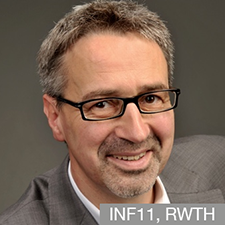
Informatik 11 – Embedded Software,
Faculty 1 of Mathematics, Computer Science Department
RWTH Aachen University
Website: https://www.embedded.rwth-aachen.de
Email: kowalewski@embedded.rwth-aachen.de
In virtually any domain of technology, software-intensive computer systems supervise and control the functionality and ensure the safety of products, machines, plants, and processes. In Computer Science, these systems are subsumed under the term “Embedded Systems”. Our research interest is in model-based, mathematically rigorous methods for their development. In teaching, we introduce the basic platforms and technology for realizing embedded systems and fundamental methods for their design and the validation of their intended functionality.
Lectures:

Professor for Virtual Reality,
Faculty 1 of Mathematics, Computer Science Department
RWTH Aachen University
Website: https://www.vr.rwth-aachen.de
Email: kuhlen@vr.rwth-aachen.de
Our research interests include all areas of Virtual Reality with a focus on immersive data analysis in scientific and technical applications as well as the design and evaluation of 3D, multimodal human computer interfaces. Application domains comprise production technology, architecture, robotics, simulation science, medicine, and neuroscience. As an integral part of the RWTH IT Center, we operate the aixCAVE, one of the largest VR installations worldwide, and we provide services in Virtual Reality and Visualization to science and industry.
Lectures:
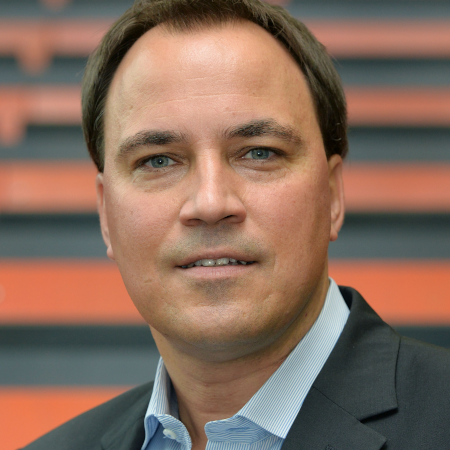

Institute of Steel Construction, Sustainable Building Envelopes (MLB),
Faculty 3 of Civil Engineering
RWTH Aachen University
Website: https://stb.rwth-aachen.de
Email: mku@stb.rwth-aachen.de
The professorship incorporates research and teaching, covering aspects of static design, building physics and, in particular, the sustainability of building envelopes made of lightweight metal structural elements. In addition, there are many interdisciplinary research topics based on classical steel construction and other related topics. Considering the sustainability of construction is an important requirement for future-proofing buildings.
The advantages of lightweight metal construction include the high recycling potential, the easy deconstruction and reusability of individual components as well as the high durability and value of the components. In addition to discussing stability and mechanical strength, there is a focus on energy-efficient construction. The increase in the energy quality of lightweight metal building envelopes is through the reduction of heat transfer. In addition, it is becoming increasingly important to consider material and resource efficiency due to increasing production costs and the decreasing economic availability of raw materials. Future-orientated and sustainable construction means optimising the ecological, economic and social aspects of buildings. Teaching in this area combines design, planning and performance, along with assessing the field of lightweight metal construction and paying particular attention to its sustainability.
Lectures:
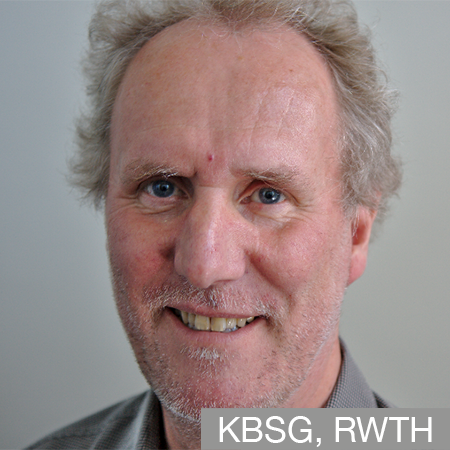
Head of the Knowledge-Based Systems Group
Faculty 1 of Mathematics, Computer Science Department
RWTH Aachen University
Website: https://kbsg.rwth-aachen.de
Email: gerhard@kbsg.rwth-aachen.de
The Knowledge-Based Systems Group (KBSG) conducts research in Artificial Intelligence, in particular, in the areas of Knowledge Representation and Reasoning (KR&R) and Cognitive Robotics.
A major focus of our work in KR&R is the study of action formalisms based on the situation calculus, including the action programming language Golog, which was originally developed at the University of Toronto. The group is also involved in developing methods for the high-level control of mobile robots, including task planning and execution monitoring. One of the application areas is production logistics, where robots need to interact with machines in the production of goods. In this context we are part of the Carologistics Team, the five-time world champion of the Robocup Logistics League competition.
Finally, within the Excellence Cluster “Internet of Production” the group is concerned with the integration of data-driven and model-based approaches in Production Engineering.
Lectures:
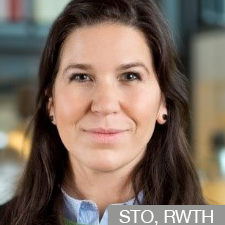
Chair and Project Manager at the Chair of Sociology of Technology and Organization (STO),
Faculty 7 of Arts and Humanities
RWTH Aachen University
Website: https://www.soziologie.rwth-aachen.de
Email: jlemm@soziologie.rwth-aachen.de
Human-robot collaboration represents the connection between the way humans and robots work. Humans and robots work on the same task, usually at the same workstation. They support each other with their abilities and thus complement each other to complete the task in the best possible way. In cooperation, man carries out the individual and sensitive tasks and the robot carries out the precise, dangerous and repetitive tasks. The work steps are separated from each other. Thus there are fixed intervention times of the robot, which are determined by the human being.
The robot can reduce the susceptibility of humans to errors in production because it works more precisely and does not deviate from the programming. In addition, the robot increases safety, because it can take over tasks that are dangerous for humans. As a result, the robot enhances the occupational field, as this becomes safer and physically easier for humans. If, however, an error has crept into the work through programming or through technical failure, the human being can correct these errors, since he can think in a solution-oriented way. In addition, the human being contributes to individualization in the process.
In human-robot collaboration, the robot thus serves as an assistance system for humans in order to increase the human radius of action. The focus is on relieving the human being. In this teaching unit, basic knowledge of human-robot collaboration is imparted from a relational technical-sociological perspective.
Lectures:
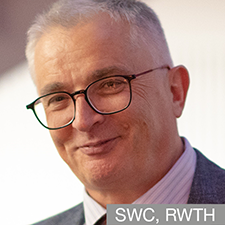
Head of Research Group Software Construction (SWC),
Faculty 1 of Mathematics, Computer Science Department
RWTH Aachen University
Website: https://www.swc.rwth-aachen.de
Email: lichter@swc.rwth-aachen.de
Software in an integral part of almost all innovative products. Furthermore, software is an important tool to develop and operator products. Software development is a complex and challenging tasks where many different skills are needed to create the right system fulfilling the desired requirements. One crucial discipline needed to develop high quality software is identifying the problem domain and designing the technical software architecture, as the architecture has many positive or negative impacts on the final software system.
Another aspect, which becomes more and more important, is software quality, as software sometimes takes over decisions and is controlling critical processes or operations. Therefore, the research group Software Construction is focusing on developing new methods, tools and techniques to support software engineers.
Lectures:
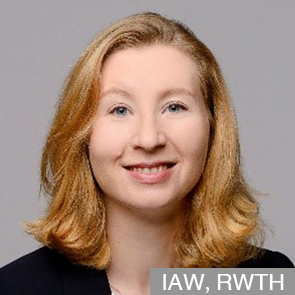
Director of Institute of Industrial Engineering and Ergonomics (IAW),
Faculty 4 of Mechanical Engineering
RWTH Aachen University
Website: http://iaw.rwth-aachen.de
Email: v.nitsch@iaw.rwth-aachen.de
The lecture Industrial Engineering and Ergonomics serves as an introduction into the topic of employee centered workplace design. Within the course the students deal with the issues of human factors related challenges and solutions in modern industrial enterprises. At the same time, the lecture prepares them for the application of according methods, tools and standards in industrial enterprises and encourages them to apply their acquired knowledge to shape the future of work.
The latest findings from applied research projects at the IAW are always included in the lectures – providing the students with the most up to date information and best practice examples.
Lectures:
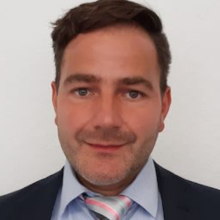

Director of Chair of Highway Engineering (isac),
Faculty 3 of Civil Engineering
RWTH Aachen University
Website: https://www.isac.rwth-aachen.de/
Email: oeser@isac.rwth-aachen.de
A high-quality compaction of the asphalt mixture is of great importance for the proper design and construction of high performance asphalt pavements. In order to improve the performance of asphalt, the compaction process of the hot asphalt mix is numerically simulated. The flow of material during the compaction under the paver screed is simulated by discrete element method (DEM). In addition, an intellectual measurement was applied to monitor the movement of granular material during paver compaction, the movement or kinematic properties of material during paving and the contact force condition of paving materials can be detected. After the paving, the asphalt performance is simulated by finite element method (FEM) using the generated micro-structure of the asphalt mixtures from X-ray Computer Tomography (X-ray CT). Different compaction methods and material properties of the asphalt mixture components are applied to investigate their influence on the performance of the asphalt mixtures. This study will help with forming the currently missing theoretical framework to optimize in-situ compaction of asphalt pavement. Meanwhile, it can also be used for guiding the construction of better asphalt compaction equipment (pavers, rollers) and thus ensure the transfer of the acquired basic knowledge into application-oriented research and development.
Lectures:
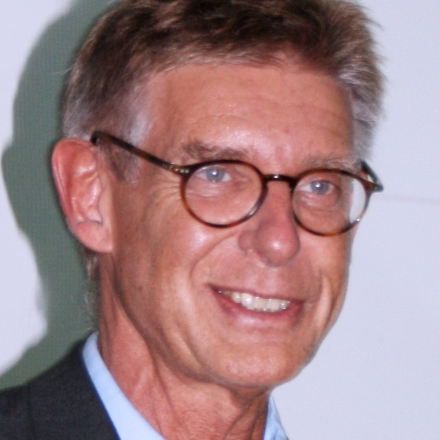

Head, Institute for Communications Engineering
Faculty 1 of Mathematics, Computer Science Department
RWTH Aachen University
Website: http://ient.rwth-aachen.de
Email: ohm@ient.rwth-aachen.de
Our focused research topics are in the area of information compression and signal analysis, with emphasis on multimedia data, and more recently, biological data.
In Video Coding, our research interests include future higher-compression coding algorithms, neural networks and machine learning approaches for compression, scalable coding, and coding based on 3D scene structures as well as video panoramas. In Signal Analysis, we work on deep learning approaches for efficient indexing and identification of imagery, scenes and objects, e.g. for retrieval applications, and for nonlinear prediction of irregular time series and events. The research interests in biological signal processing are focusing on compression and analysis of signals expressing genomic information.
We frequently contribute to the major conferences dedicated to our area. The research work is framed by long-term involvement in standardization activities and by projects with industry and academic partners all over the world. In this context, we continue contributing to compression standards like Advanced Video Coding, High Efficiency Video Coding, and Versatile Video Coding. For this lecture students shall acquire an advanced knowledge about signal processing, time/frequency characterization, sampling, estimation and detection problems with emphasis on application in communication systems signal analysis and systems optimization.
Lectures:
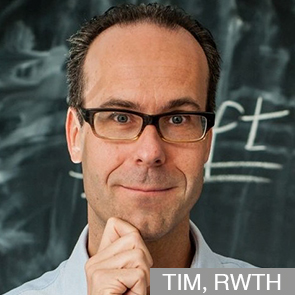
Professor of management and Head of Institute for Technology and Innovation Management (TIM),
Faculty 8 of Business and Economies
RWTH Aachen University
Website: https://www.time.rwth-aachen.de/…/
Email: piller@time.rwth-aachen.de
Frank Piller is a professor of management and Head of Institute for Technology and Innovation Management (TIM) at RWTH Aachen University, Germany, the center of “German engineering”. At RWTH Aachen, he currently serves as the Dean the RWTH Business School. Before entering his recent position in Aachen, he worked at the MIT Sloan School of Management (2004-2007) and TUM School of Management, Technische Universitaet Muenchen. He held visiting professorships at HKUST, Chalmers University, and IE Business School.
Prof. Piller is regarded as one of the leading experts on strategies for customer-centric value creation, like mass customization, personalization, and innovation co-creation. His group at RWTH became one of the globally leading research centers for open and distributed innovation, supported by competitive research grants of about US$1million annually. As indicated by a h-Score of 54, >15,000 citations of his publications (Google Scholar), and more than 250 general press articles about his studies (and listed as the only German professor on LDRLB’s “Top50 Profs on Twitter” list), his work has attracted broad attention and reception in academia and the management community.
Lectures:
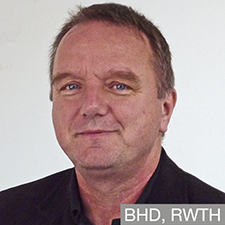
Department for Historic Building Conservation and Research (DHB),
Faculty 2 of Architecture
RWTH Aachen University
Website: http://www.dhb.rwth-aachen.de
Email: raabe@dhb.rwth-aachen.de
The topic of Planning and Building in Existing Contexts is becoming an increasingly important requirement in a society that is aware of its limited resources. The need for more extensive training in this area is based on the knowledge that future architects will, more than ever before, have to deal with existing structures and their repurposing, restructuring and expansion. Sustainable urban development and sustainable urban planning require different approaches compared to new construction projects.
Historic buildings are a limited social resource. Historic monuments make up only a small percentage, around 3 percentage, in this area, but they make a significant contribution to connecting the past to the present and making history tangible and visible. In contrast to the ever more extensive virtual experiences, they represent the value of the original and the authentic. Each building has its own individual story and every project poses a unique challenge to the architect. These cannot be handled alone but in association with specialist: conservationists, building researchers, restorers, scientists, engineers and architects.
Competencies:
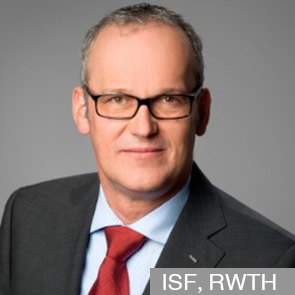
Director of Welding and Joining Institute (ISF),
Faculty 4 of Mechanical Engineering
RWTH Aachen University
Website: https://www.isf.rwth-aachen.de
Email: office@isf.rwth-aachen.de
Joining in general is one of the key-processes for most production processes. This also applies to the construction sites of civil engineering. Automated production including joining processes such as welding or adhesive bonding require a fundamental understanding of their function principles, their impact on construction materials as well as the prerequisites for their application.
The Welding and Joining Institute (ISF) of the RWTH Aachen University has, for almost 60 years now, been dealing with modern welding and joining technologies, including arc-welding and adhesive bonding as they are widely used on construction sites. Main emphasis of research and teaching is put on the application-oriented implementation for innovative materials and design. Furthermore ISF offers a wide range of topics of bachelor and master thesis in the field of welding and joining.
Lectures:
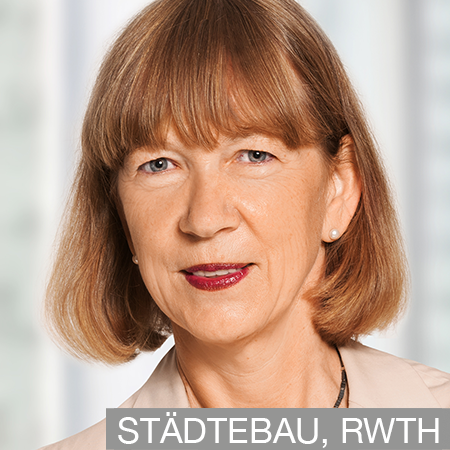
Director of the Chair of Urban Design and the Institute for Urban Design and European Urbanism
Faculty 2 of Architecture
RWTH Aachen University
Website: https://staedtebau.rwth-aachen.de
Email: reicher@staedtebau.rwth-aachen.de
The Chair of Urban Design and the Institute for Urban Design and European Urbanism are concerned with complex urban structures ranging from a regional and city-wide context, throughout the neighbourhood level, up to a single building.
Based on historically grown structures, the focus is on design and further development of sustainable cities and neighbourhoods, taking into account their technical, ecological, economic, and socio-cultural framework conditions. The core in teaching and research are typological building blocks of the city and their genesis in terms of urban planning history as well as different methods of urban design and design principles.
The Chair and the Institute also lead the European master programme Transforming City Regions. The programme presents dynamics of urban areas in Europe, discusses in this context a new definition of the city, and elaborates contemporary processes shaping cities and urban areas. These dynamics of change play out in many different arenas including the physical and territorial, and are driven by demographic, socio-economic, environmental and political changes and developments.
Lectures:
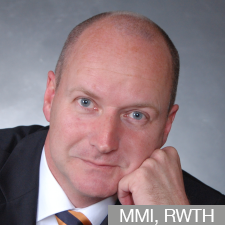
Director of Institute for Man-Machine Interaction,
Faculty 6 of Electrical Engineering and Information Technology
RWTH Aachen University
Website: https://mmi.rwth-aachen.de/en
Email: rossmann@mmi.rwth-aachen.de
The main focus of the Institute for ManMachine Interaction (MMI) is to bridge the gap between fields of robotics and virtual reality in order to develop, implement and apply new concepts of advanced control, man-machine interaction and communication. MMI specializes in modelling systems and environments, in analyzing complex systems, in connecting humans, devices and machines, and in realizing intelligent systems. MMI’s innovative Digital Twins revolutionize the development process and the operation of (not only) robotic systems.
Virtual and real robotic systems are co-developed, simulated and controlled in the context of their respective work environments in Virtual Testbeds. The application areas span various industries and disciplines, ranging from robot manipulators, mobile robots, spacecraft and road vehicles up to agricultural, forestry, and construction machines.
Lectures:
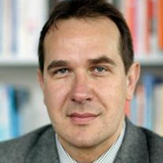

Director of Chair for Software Engineering (SE),
Faculty 1 of Mathematics, Computer Science Department
RWTH Aachen University
Website: https://www.se-rwth.de
Email: rumpe@se-rwth.de
The Software Engineering group concentrates on innovative and practically useful concepts, methods, and tools for the development of complex business and software-intensive embedded systems on a sound and reliable scientific and engineering basis. In the current age of digitalization, it is important to develop at high speed and deliver good quality. In recent years, software engineering has significantly extended and consolidated its portfolio of methods, techniques, and tools to support development of highly critical, reliable, or functionally complex systems within the predefined time and a given budget while meeting the required quality. It is our goal to transfer this knowledge and the accompanying tools into industry as well as to customize and apply them to project and company specific needs. Our mission: “To define, improve, and industrially apply techniques, concepts and methods for innovative and efficient development of software and digitalization-based systems, such that high-quality products can be developed in a shorter period of time and with flexible integration of changing requirements.”
Lectures:
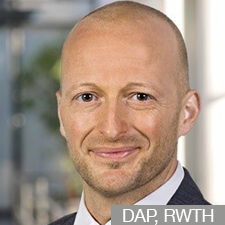
Director of the Chair for Digital Additive Production (DAP),
Faculty 4 of Mechanical Engineering
RWTH Aachen University
Website: https://dap-aachen.de
Email: johannes.henrich.schleifenbaum@dap…de
The RWTH Aachen University Chair for Digital Additive Production DAP researches fundamental technical and economic Additive Manufacturing interrelationships. From component design, to supply chain, production and component handling, to application properties of additively manufactured components: The Chair DAP considers all horizontal and vertical elements of the Additive Manufacturing process chain.
Besides the further development of existing AM processes and existing machine and system technology especially the focus on software-driven end-to-end processes is an essential working point of the DAP. Starting with bionic lightweight construction, functional optimization for AM and the design of “digital the functional optimization for AM and the design of “digital materials” up to the validation in the real process and the derivation of static and dynamic parameters, the advantage can be realized with additive processes using digital technologies. For this purpose, almost all common software suites in the field of Authoring systems (CAD) and commercially available CAx systems, FEM modelers etc. are available.
On the machine side, both commercially available equipment as well as adapted laboratory systems and Experimental setups are ready for usage. Beyond the purely technological topics, the chair supports industrial partners in mastering the challenges posed by the implementation of Additive Manufacturing and the involved emerging complexity. By means of AM-driven consulting services, the DAP guarantees an integrated consideration of the implications of additive manufacturing at a strategic, tactical and operative company level and thus creates the conditions for the competitiveness of the numerous industrial partners in the AM environment within the scope of fundamental, joint and industrial projects from the various industries, as well as close cooperation with non-university research institutions, the DAP has an extensive expertise in the field of Additive Manufacturing and the supporting processes.
Lectures:
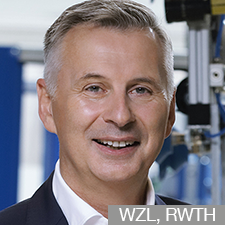
Director of Chair of Production Metrology and Quality Management,
Faculty 4 of Mechanical Engineering
RWTH Aachen University
Website: https://wzl.rwth-aachen.de
Email: r.schmitt@wzl.rwth-aachen.de
Lecture Robotic Sensor Systems
The number of robotic applications in our everyday life increases continuously. In both private households and industrial environments, we observe a constant diversification of operational areas of robots. While the same type of robot is used in different applications (e.g. an industrial robot for welding or palletizing), the sensors such as cameras or force sensors attached to the robotic system differ depending on process requirements. Thus, the robotic system becomes highly adaptive by the use of additional sensor equipment.
The lecture Robotic Sensor Systems provides an understanding of industrial robots as metrological systems in industrial processes. It will be explained how a robotic system can be extended by sensors to meet specific process requirements. Current sensor technologies are presented and underlying physical fundamentals are explained. For the use of the obtained sensor data, techniques for signal processing are presented.
Lecture Quality Management
Due to the digitization and networking of production as well as construction and the associated increase in data, quality management will play an increasingly important role in the future. The lecture “Quality Management” shows how this increase in data can be used in quality management. With this objective, mathematical-statistical basics as well as data analytics and AI methods will be presented which are used to generate information from the data. Then, it will be shown how these methods can be used for different areas of quality management, e.g., process control, risk management, customer needs, in order to finally offer decision support, possibly by employing smart devices.
Lecture Production Metrology
Measurements are essential for the quality assurance of processes and products and become more and more relevant considering recent developments in the digitalization of production. The extraction of process information and knowledge is only possible with the application of the right measurement systems. The course Production Metrology offers you a deep insight in the world of metrology. You will learn about why it is necessary to measure, how to plan and execute measurements, what devices and techniques are available, and, of course, how to evaluate and interpret the results. Many practical and demonstrative exercises will enable you to use organizational and methodical measures for monitoring production processes and to assure the products’ fulfilment of previously defined requirements.
Lectures:
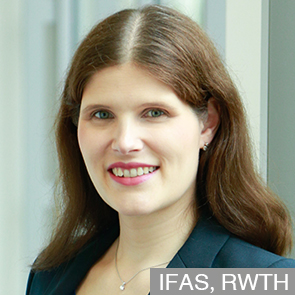
Director the Institute for Fluid Power Drives and Systems (ifas),
Faculty 4 of Mechanical Engineering
RWTH Aachen University
Website: https://www.ifas.rwth-aachen.de
Email: post@ifas.rwth-aachen.de
The Institute for Fluid Power Drives and Systems (ifas) of RWTH Aachen University is one of the world’s largest and best known scientific institutions conducting research in all aspects of fluid power. This includes hydraulics and pneumatics, as well as all of its fields of application. To be equipped for the future, current research includes areas such as information technology, servo-control engineering, electrical engineering, tribology and chemistry on top of mechanical engineering.
Environmental, safety and health regulations as well as increasing industrial consumer requirements necessitate a continuous development of sustainable and efficient fluid power technology. Greater environmental awareness and new technologies, e.g., mechatronic systems, preventative maintenance, additive manufacturing, biomedical applications, surface coating techniques and modern information technologies, offer new perspectives and fields of application for fluid power systems.
The highly motivated team of aspiring young scientists takes on the challenges presented by this extensive and diversified field of study. The institute’s multiple and profound national and international connections with manufacturers and users of fluid power components and systems, as well as other research facilities, ensure that its activities are leading the way into the future of research, development and education of fluid power systems.
Lectures:
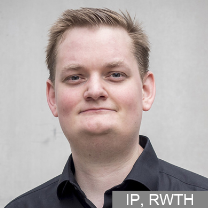
Senior Researcher at the Chair for Individualized Production (IP),
Faculty 2 of Architecture
RWTH Aachen University
Website: https://www.ip.rwth-aachen.de/
Email: stumm@ip.rwth-aachen.de
Sven Stumm is a computer scientist with extensive experience in electrical and mechanical engineering. He is currently leading the robotic programming and outdoor robotics research team at the chair for Individualized Production in architecture at RWTH Aachen University. Sven Stumm submitted the first PHD Thesis at the Chair for Individualized Production in Architecture (IP) in 2018 titled “Interconnecting Design Knowledge and Construction by Utilizing Adaptability and Configurability in Robotics”, which was graded summa cum laude.
His research focusses on accessibility of robotics, through human robot collaboration and sensor based adaption with a-priori knowledge. His work is based on 14 years of experience in software design and development ranging from optimization and intelligent system design over simulation software to data standardization and exchange between heterogeneous software tools, as well as extension of computer aided design software. 10 years of experience in robotics ranging from mobile humanoid robotics, over mobile service robotics to industrial and mobile industrial robotics, as well as 7 years of experience in scientific research and teaching as a scientific assistant at TU Dortmund University and at the RWTH Aachen University. His work allowed him to gain 3 years of experience in mechanical engineering and industrial assembly processes, as well as 4 years of experience in architecture and construction processes.
Lectures:
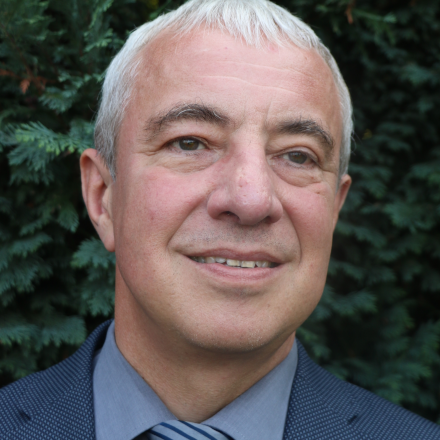

Director of the Chair of Structures and Structural Design (TRAKO),
Faculty 2 of Architecture
RWTH Aachen University
Website: https://trako.arch.rwth-aachen.de
Email: trautz@trako.arch.rwth-aachen.de
At the Chair of Structures and Structural Design, this particular aspect of the environment, namely the effect of forces and strains on any object, including buildings, is the focal point of consideration. This task is closely linked to architectural design since the structure is oftentimes an integral and visible part of the architecture, and, in certain cases like bridges or civil engineering works, constitutes the design as a whole. In order to rise to this interdisciplinary challenge, our team consist of architects as well as civil engineers.
The basic knowledge and principles of a structural design approach as well as the development and planning of supporting structures are being conveyed as part of the undergraduate curriculum via lectures, tutorial, seminars and design projects. On this basis, the graduate courses incorporate current research topics and offer students a possibility to engage in relevant design projects. The seminars focus on the development of innovative projects up to a ready for construction stage. Topics for design projects and seminars are derived from current research focus of the chair, for instance in the field of timber constructions, industrial planning and infrastructure, or structural morphology principles like folding.
Lectures:
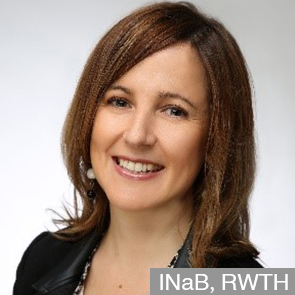
Head of the Institute of Sustainability in Civil Engineering (INaB),
Faculty 3 of Civil Engineering
RWTH Aachen University
Website: http://www.inab.rwth-aachen.de/
Email: marzia.traverso@inab.rwth-aachen.de
While the protection of our planet and its sustainable development are on the political agenda, its implementation remains a major challenge in daily practice. Both lectures present methods and tool to assess environmental and sustainability in its three dimensions of companies, projects, products and services, where the sustainability assessment methods and tools give an overview of those methodologies with practical examples and implementation.
Considering the three dimensions of the sustainability (economic, social and environmental one), the second lecture Lifa cycle Consolidation focuses the attention on the environmental assessment of products and services according to the norm ISO 1404x series. It presents in detailed the different methods to perform a Life cycle assessment of a product, and the different methodologies and initiative to support decision making processes and developers towards a more sustainable production. Furthermore, in accordance with the 12 Sustainable Development Goal – Agenda 2030- particular attention is posed to the presentation and communication of the result to support a sustainable consumption.
Lectures:

Chair and Institute of Technical Acoustics (ITA)
Faculty 6 of Electrical Engineering and Information Technology
RWTH Aachen University
Website: https://www.akustik.rwth-aachen.de
Email: post@akustik.rwth-aachen.de
The main research focus of the Chair of Technical Acoustics is “Auralization”. It is the technique of creation and reproduction of sound on the basis of computer data. With this tool is it possible to predict the character of sound signals which are generated at the source and modified by reinforcement, propagation and transmission in performance spaces, rooms in general, buildings in general, and urban environments, just to give a few examples.
In teaching, we offer a comprehensive collection of the basics of sound and vibration, psychoacoustics, acoustic modelling, simulation, signal processing and audio reproduction. With some mathematical prerequisites, the main strategy of auralization can followed easily, and own implementations of auralization in various fields of application in architecture, acoustic engineering, sound design and virtual reality can be created. In basic research, the technique of auralization may be useful to create sound stimuli for specific investigations in linguistic, medical, neurological and psychological research, and in the field of human-machine interaction.
Lectures:
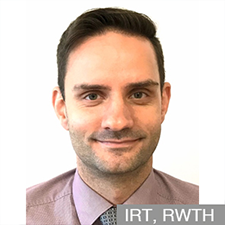
Managing Director of Institute of Automatic Control (IRT),
Faculty 4 of Mechanical Engineering
RWTH Aachen University
Website: https://irt.rwth-aachen.de
Email: r.zweigel@irt.rwth-aachen.de
The Institute of Automatic Control, headed by Prof. Dirk Abel, is located in the Faculty 4 of Mechanical Engineering at RWTH Aachen University and is an intermediary among control theory and diverse application fields of control and automation technologies.
In addition to basic control theory, the main focus of research work is on mechanical engineering, automotive engineering, process engineering, energy and medical technology. Furthermore, the institute has long term experience in multi-constellation and dual-frequency aided inertial-navigation systems for different applications, such as automotive, railway, aviation, and shipping. The institute was responsible for the construction of Galileo test facilities for railway and automobile applications near Aachen. Therefore, the development of navigation filters using GPS and the new European satellite-navigation system Galileo is also part of the institute’s expertise and research activity.
Lectures:
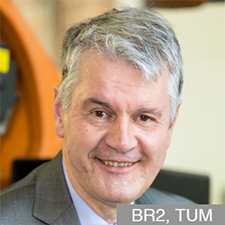
Director of the Chair for Building Realization and Robotics (br2),
Faculty of Architecture
Technical University of Munich (TUM)
Website: https://rod.de/
Email: bockrobotics@web.de
Introduction: Mission of the chair for Building Realization and Robotics is to extend the traditional core competences of design and build, broadening the activity area of future graduates, professionals and creating new employment opportunities. Located at TUM within the Bavarian high tech cluster -in which the chair is well connected - the chair functions as an incubator for the development and socio-technically integrated and building related technologies.
In the Master Course Advanced Construction and Building Technology which the chair is coordinating since 2011 the chair has achieved to concentrate students coming from 8 different professional backgrounds (Architecture, Industrial Engineering, Electrical Engineering, Civil Engineering, Business Science, Interior Design, Informatics, Mechanical Engineering).
Lectures:
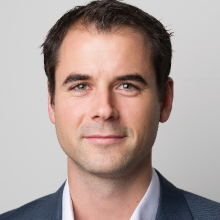

Director of Robotic Systems Lab,
ETH Zurich
Website: https://www.rsl.ethz.ch
Email: mahutter@ethz.ch
The Robotic Systems Lab develops machines and their intelligence to operate autonomously in rough and challenging environments. With a large focus on robots with arms and legs (e.g. quadrupedal robots, mobile manipulators, hybrid wheel-leg systems), the research includes novel actuation methods for advanced dynamic interaction, innovative designs for increased system mobility and versatility, and new control, optimization and learning algorithms for locomotion and manipulation. Our machines are deployed in various real-world scenarios, such as for exploration and inspection of offshore industrial sites, mines, sewer, tunnels, or caves, for search and rescue operations, in rehabilitation and for construction.
Since 2015, Marco Hutter is Principal Investigator of the NCCR digital fabrication, a national competence centre for research in digital fabrication in Switzerland. As part of this large-scale research program, interdisciplinary collaborators from robotics, architecture, and civil engineering investigate new ways of using robot technologies to facilitate new building processes. This ranges from AR to support humans on construction sites, over small mobile robots that can conduct high-precision working tasks on site, to automated construction machines.
Lectures:
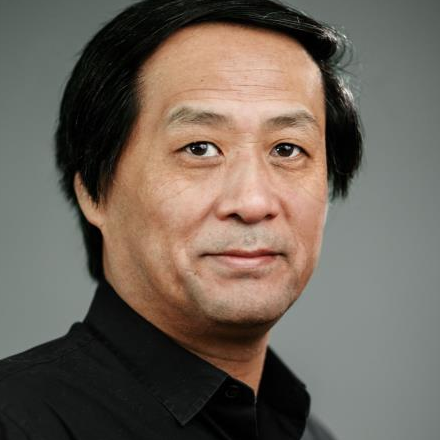

Professor and former Chair of Architecture Department / Director of the DADA,
School of Architecture
Tsinghua University
Website: https://www.tsinghua.edu.cn
Email: xwg@mail.tsinghua.edu.cn
Prof. Xu is a pioneer architect who has been active internationally in the field of digital design and digital fabrication for years. He has devoted many excellent researches and practical projects to the innovation of architecture and construction, such as robotic masonry system construction, concrete 3D printing, AI form finding, big data in architecture and etc. One of his prominent works – 3D printed concrete bridge is listed as the world’s longest 3D-printed concrete pedestrian bridge.
Prof. Xu has published more than 140 papers and 17 books. A series of his research projects have been funded by NSFC. He has lectured worldwide, been visiting scholar at MIT in 2007, and taught in SCI-Arc and USC in 2011-2012. He has curated the DADA series events in 2013, and co-curated Architecture Biennial Beijing 2004, 2006, 2008 and 2010.
Lectures:
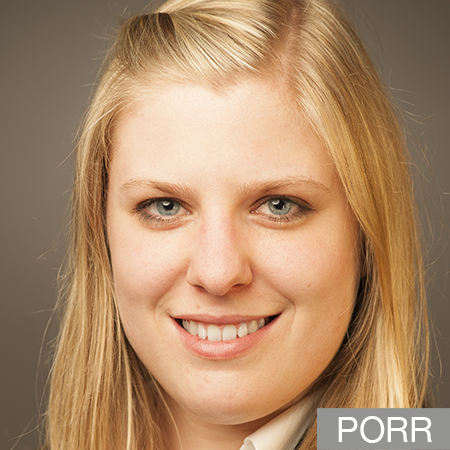
Business Excellence/Digital Unit
Project Manager Digital Innovations
![]()
Website: porr-group.com/en/
Email: karina.schiefer@porr.at
We have a motto for the way we do business at PORR: intelligent building connects people. Our goal is to bring together our high standards regarding quality, technology and efficiency with every person involved in a project – whether a builder or a user. After all, we build with and for people. Values such as trustworthiness, reliability, customer focus and teamwork are an important part of our identity, as is an approach based on partnerships.
PORR is part of the Master Programme Construction Robotics and of the Center Construction Robotics because we want to find new ways of boosting the development of research and teaching scenarios aimed at training the best minds in the construction industry. This is the only way we will be able to meet challenges together - not just in Germany, but all over the world.
In addition to the exchange of practical experience from the construction sector, the aim of the course is to develop different approaches for the successful implementation of interdisciplinary projects.
Lectures:
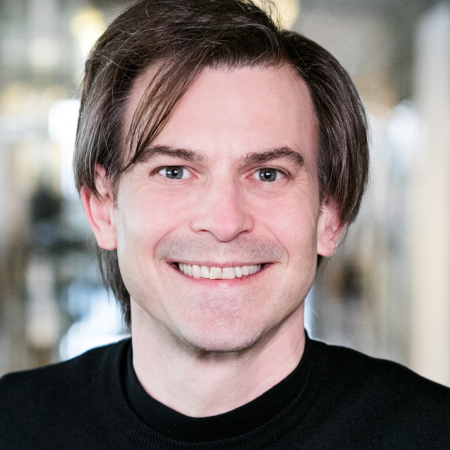

Managing Partner
Website: www.kadawittfeldarchitektur.de
kadawittfeldarchitektur is an internationally active office involved in architecture, interior design, town planning and urban projects. Founded in 1999, today with a team of 160 people, the architects, project managers, consultants and cooperation partners focus on all the associated design, communication and organisational tasks. Projects like the main railway station in Salzburg, the Adidas Laces building in Herzogenaurach and the Grimmwelt Museum in Kassel are representative of the office’s numerous buildings completed in the past. Projects like the new administrative headquarters of RAG-Stiftung and RAG AG at the UNESCO World Heritage Site Zollverein in Essen and Moringa, a residential high rise built according to the cradle-to-cradle principle, demonstrate the office’s focus on sustainable architecture. In addition, kadawittfeldarchitektur has come first in numerous international competitions, such as the DFB Academy in Frankfurt a.M. and the refurbishment and extension of the venue Komische Oper in Berlin-Mitte.
Lectures:
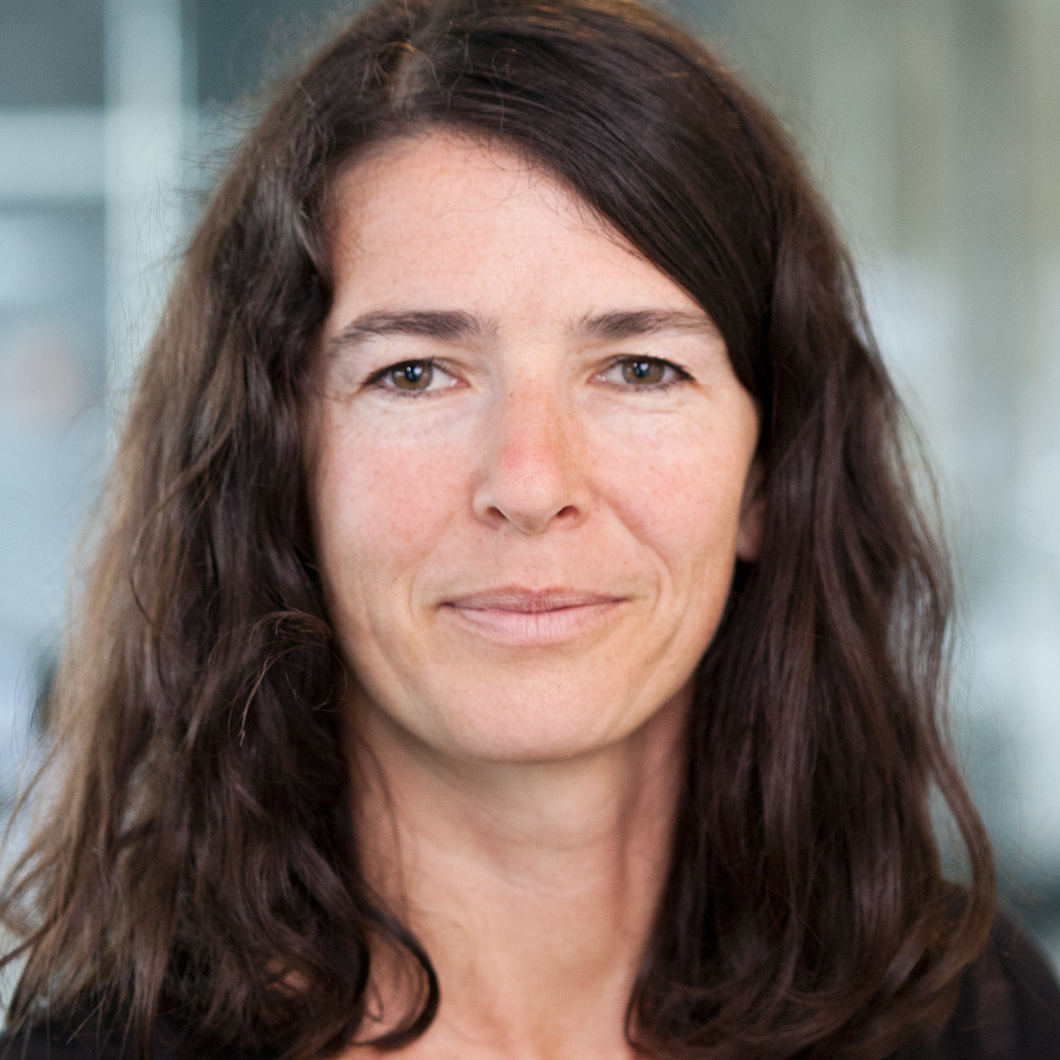

Partner
Website: www.kadawittfeldarchitektur.de
kadawittfeldarchitektur is an internationally active office involved in architecture, interior design, town planning and urban projects. Founded in 1999, today with a team of 160 people, the architects, project managers, consultants and cooperation partners focus on all the associated design, communication and organisational tasks. Projects like the main railway station in Salzburg, the Adidas Laces building in Herzogenaurach and the Grimmwelt Museum in Kassel are representative of the office’s numerous buildings completed in the past. Projects like the new administrative headquarters of RAG-Stiftung and RAG AG at the UNESCO World Heritage Site Zollverein in Essen and Moringa, a residential high rise built according to the cradle-to-cradle principle, demonstrate the office’s focus on sustainable architecture. In addition, kadawittfeldarchitektur has come first in numerous international competitions, such as the DFB Academy in Frankfurt a.M. and the refurbishment and extension of the venue Komische Oper in Berlin-Mitte.
Lectures:
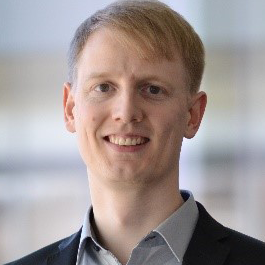

Development Engineer for Automatization and Digitalization,
LEONHARD WEISS GmbH & Co. KG
Website: https://www.leonhard-weiss.de
Email: p.wildemann@leonhard-weiss.com
Peter Wildemann is a civil engineer with experiences in road- and structural design and construction operation. He is currently working in the fields of supply and value chain digitalization and construction project management. Peter Wildemann has a vocational education as a specialist for road and traffic engineering, while also working in this field during his studies. He studied from 2013 till 2018 at Hochschule Darmstadt with a focus on structural engineering and construction operation, writing his master thesis about the digital detection of construction site processes in real time.
After his studies he started working for the construction company LEONHARD WEISS GmbH & Co. KG as a development engineer. He gained experiences in construction project management, formwork planning and the digitalization of the supply chain in construction. In his doctoral studies he is researching the automated detection of processes on the construction site and their supply, in order to optimize construction processes.
Lectures:
